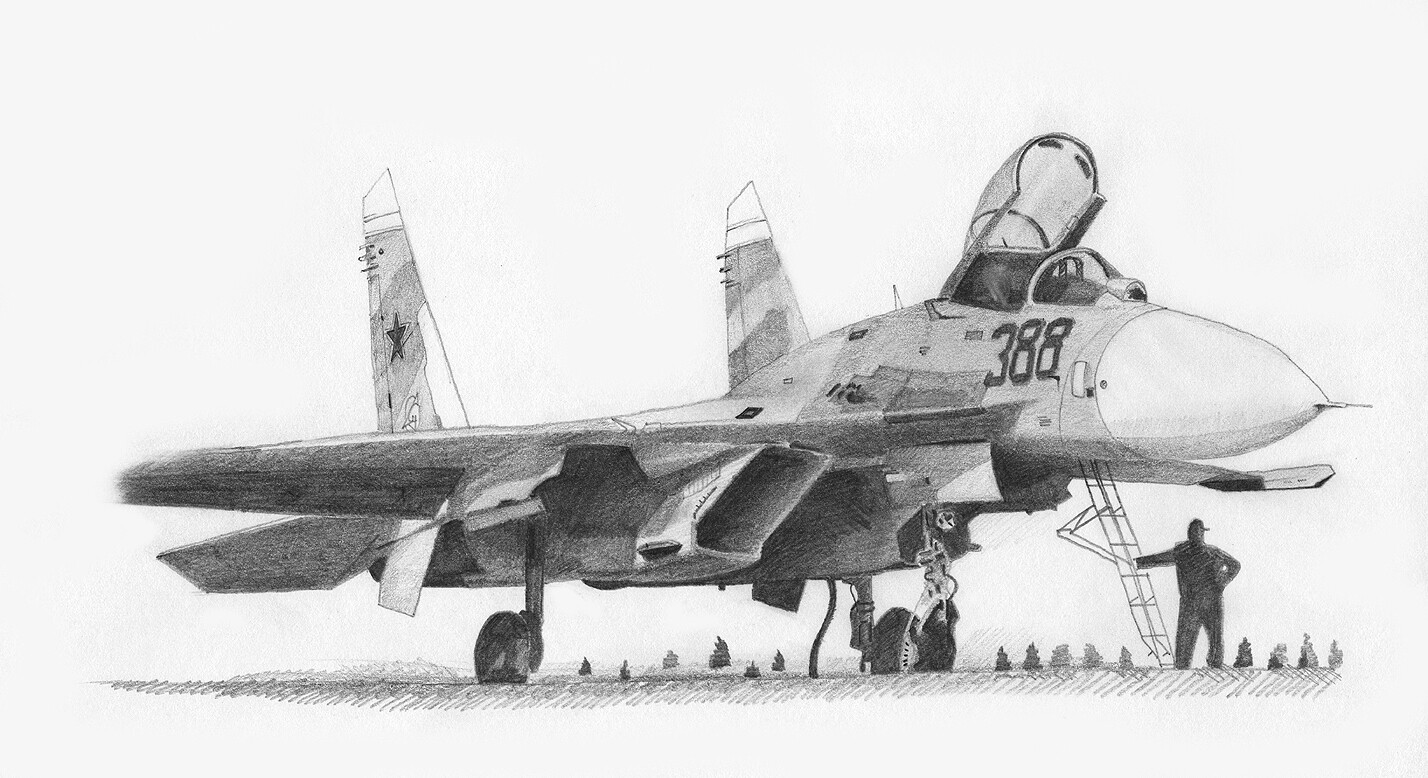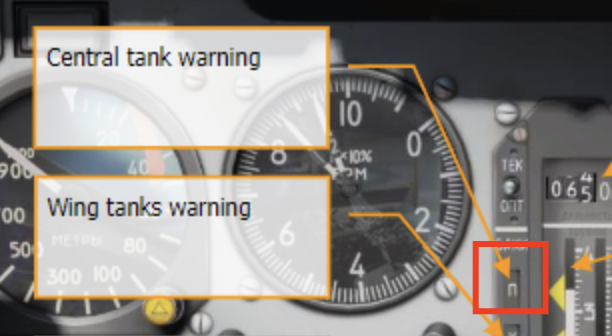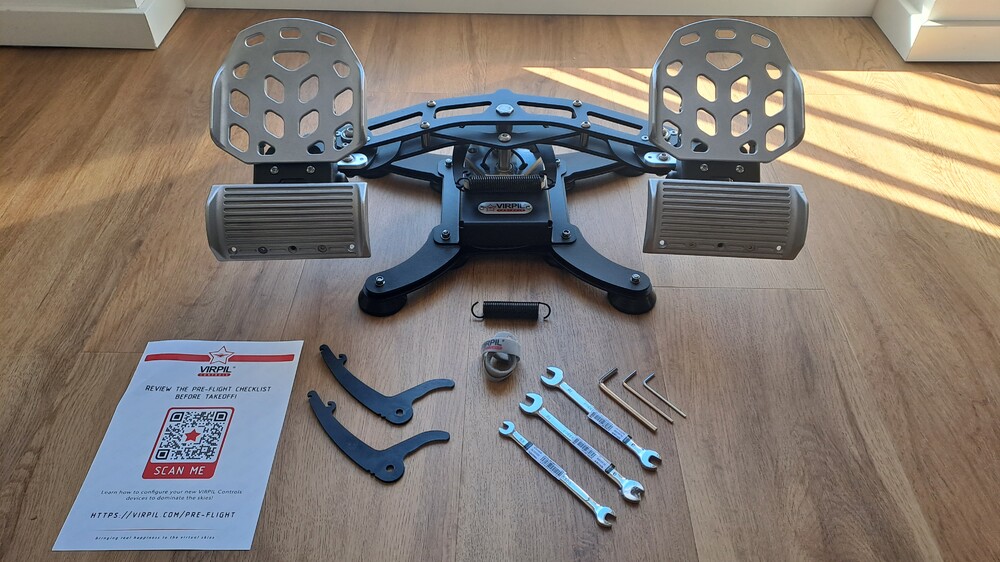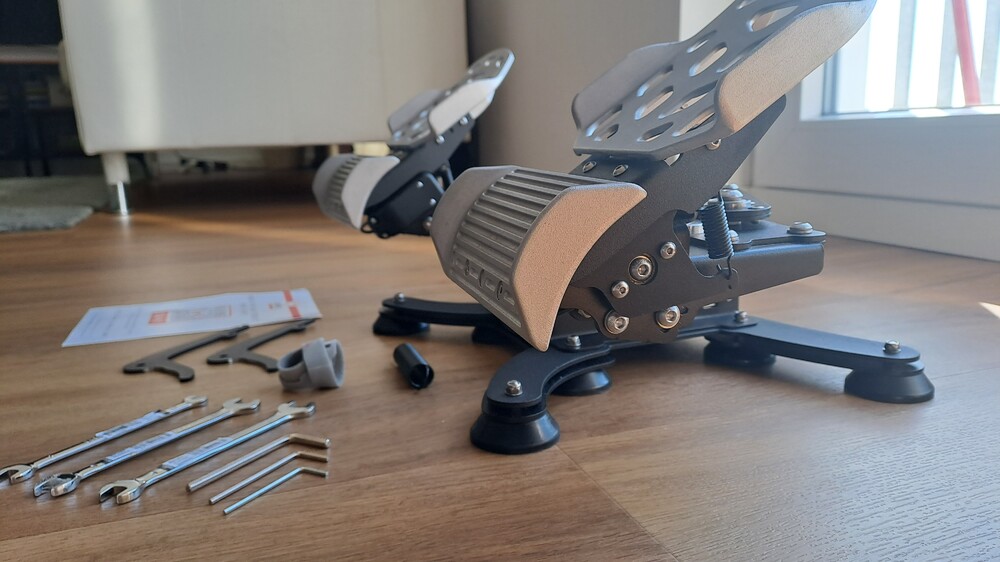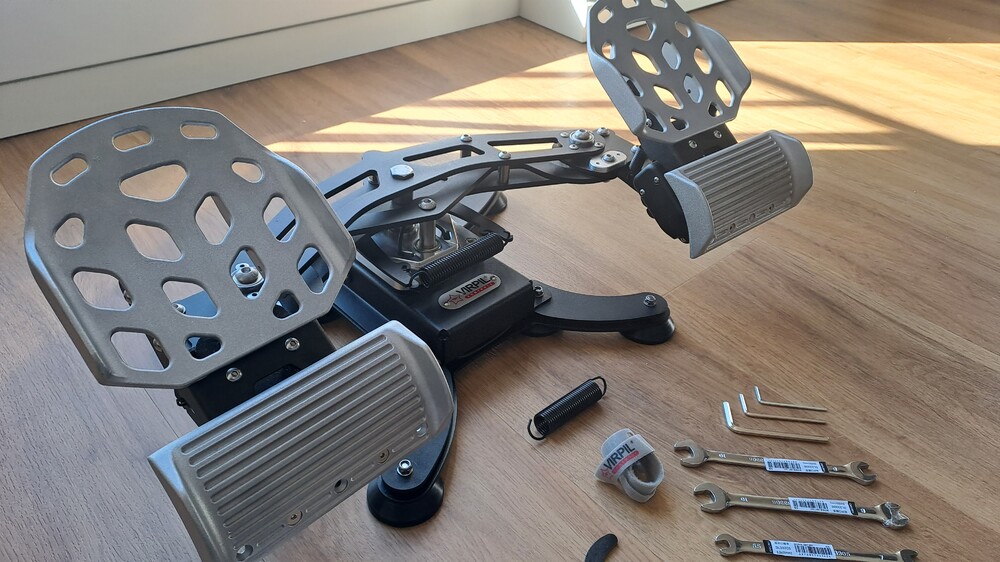-
Posts
487 -
Joined
-
Last visited
Content Type
Profiles
Forums
Events
Everything posted by Pavlin_33
-
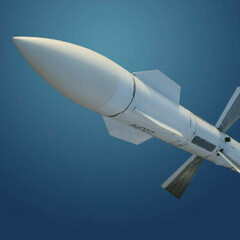
A couple of questions
Pavlin_33 replied to VR Flight Guy in PJ Pants's topic in MiG-29 for DCS World
Yes, it is. Check your key bindings to make sure there is not an accidental press somewhere. I think it needs to be level (close to zero bank), not sure about the pitch. You can't, but you can tell when the center tank is empty: first light on the left side of the fuel indicator will light up. It will extinguish once you jettison it [droptank]. You're welcome. -
While taxiing the Frogfoot, the entire image (view) is shaking which is unrealistic - only the airplane should shake and not the image you are seeing. It can be easily observed by zooming in to some outside object, like a building. It's as if someone is shaking the monitor. Our eyes don't work like a camera, so mild to moderate vibrations should not make the image we are seeing move. The reason is 'cause our brain actually interprets the picture our eyes are sending to it, and kind of fakes it. You can test it by moving your eyes and/or your head very quickly in random directions - does the image you see move at all? The answer is no and it's because of what I wrote above.
-

investigating Thrust to weight ratio: confused
Pavlin_33 replied to bkthunder's topic in MiG-29 for DCS World
I would not really call it "hearsay" as we have that video of real life Su-30 (might be wrong on the type here) that has same engines as 27 and is heavier than the Flanker and yet it accelerates faster. Yes sure, we don't know the OAT in the video, but this is not the only thing that points to potential 27 issues. -
Yup it's like this for all aircraft. It's literally like: 0, 1, 2 state with: 0 - engine off 1 - engine on 2 - afterburner on Opens up a window for abuse, since you can toggle engines on and off to gain advantage.
-
One and two circle fights depend on your and the state of your opponent and is mainly driven by geometry. I've created a simple illustrative example here: You can determine the corner speed by your self. Simply speaking it's the highest G force you can pull at the lowest possible speed. Set a G limit for your self, let's say 9G and start pulling at let's say 1000km/h (full afterburner). The Flanker will start slowing down and the speed at which it can no longer pull 9G is just below the "corner" speed. If we are talking about missile merges, USE THE OVERRIDE! This will allow you greater alpha and the only thing that matters there is to point your nose at the enemy and fire in the shortest time possible. If you get that R-73 at the enemy first, you do not really care about your airspeed nor your energy. He will be dead, and you can then go and recover. As one of the instructors said: "There's no use in dying with extra speed on your hands." If we are talking about guns only DF, then I would say that the Flanker is quite poor in that arena. It's under-powered (compared to other DCS fighters) and personally I find that most I can do against competent adversaries is to push them in front of me, but then I can't do much 'cause they have the thrust advantage. If you come a cross similarly-skilled enemy there's not much you can do. MiG-29 is much better and F-15 is way better in guns-only dog fights.
-
Hi, I am selling my Virpil ACE Interceptor Pedals. They are in mint condition and saw moderate use (not that it matters, the way they're build). Package contains: two tension springs (soft and hard) two cam pairs (soft and hard center) USB cable tools manual original packaging box cable strap Desired shipping preference in order of priority: 1. Germany 2. EU 3. Europe Price: 240Eur + Shipping
-
- pedals
- ace interceptor
-
(and 1 more)
Tagged with:
-
If you need someone to help you out, I would be more than happy to do it.
-

need evidence AIM-120 Easily driven into terrain
Pavlin_33 replied to Default774's topic in Weapon Bugs
Thats's a bit funky. The missile has no idea where the ground is and neither the launching aircraft (DCS ones). What could be possible is that at a certain altitude (altitude at launch minus current alt) it stops making huge intercepts. But this would only work for certain terrain. More important point is that we have no prof that 120 has this capability. We are just guessing here. Also, do we know any A2A missile that does? -

need evidence AIM-120 Easily driven into terrain
Pavlin_33 replied to Default774's topic in Weapon Bugs
Was about to mention this. We just assumed that 120 has this capability. -
-
I am looking for one. Location: Berlin. Please message me via PM if still available.
-
I'm no expert but it seems to me like a guidance bug. I would expect a missile to go kind of parallel close to a maneuvering target. With this kind of intercept it would take it Saturn V rocket motor to reach the Viper.
-
The 77 has an old API, so basically what you did there takes the best advantage of it. You put it on your 3-9 line and made a rapid altitude change. Notice how it turns down below the ground to intercept you. Not sure why it turned parallel though, must have lost track or something,
-
I've been thinking about this topic for a while, I fly mostly red planes, and came to the conclusion: doesn't the West radar do exactly the same? Isn't moving the TDC (not 100% sure if that's how the target designator is called) up 'n' down the same as adjusting the Flanker's expected target distance? If am not badly mistaken, NATO and Soviet radars are controlled the same way, it's just that the Soviet ones care about the search "center" and the NATO ones care about search area limits. For someone who flies blue fighters rarely, I find the radar misleading, 'cause if I set the radar at 80nm and scanning from 0 to 60K ft it seems that I will pick up targets that inside these parameters and this is really not true - learned that the hard way. What this setting does instead is basically telling the radar: "Hey, search [for a target] from 0 to 60K ft AT 80nm". If a target is at 40nm, this does not guarantee it will be picked up if it's height is above or below. But I set it to cover 0 to 60K, how come? Soviet-styled radar is more like: point and shoot. Also, the expected target distance will automatically position the radar's elevation to the correct angle. Antenna's tilt will not be the same for a target that is 3km below you at 10km distance and 3km below you at 80km.
-
Shots fired
-
I stand corrected. Mass is a factor determining terminal velocity: increase in mass, increases V c Thank you for pointing this out. I could not find a valid reference for it's terminal velocity nor for its drag coefficient. There is this paper here about Mk-82, but I think that Cd that coefficient seems too low, for some reason.
-
Just to make it clear: weight has nothing to do with terminal velocity. I know it's counter-intuitive, that's why I mentioned the hammer and feather example. I don't really have proof strictly speaking, but you can't expect a similarly-shaped object (bullet-bomb) to have air resistance order of magnitude less. Having said that, I am yet to verify how much would a bomb-shaped object accelerate/decelerate.
-

fixed AIM-120 HOJ incapable of hitting manoeuvring targets
Pavlin_33 replied to Default774's topic in Weapon Bugs
Any idea what range that was? Burn through distance is the same for all fighters in DCS, so it should be easy to tell. -

fixed AIM-120 HOJ incapable of hitting manoeuvring targets
Pavlin_33 replied to Default774's topic in Weapon Bugs
To be honest I don't know. My ECM knowledge is limited to FC3. You said you were toggling the jammer on/off - I guess the 120 switches its radar on after the ECM are switched off. What happens if you keep the jammer on and the 120 is fired at you otside the attackers burn through distance? Does it still go active? -

fixed AIM-120 HOJ incapable of hitting manoeuvring targets
Pavlin_33 replied to Default774's topic in Weapon Bugs
The entire ECM topic is a bit out if my competences, but in DCS: 1. I guess burn through for AIM120 is the same as the pitbill distance 2. 120 in HOJ does not emit any radiation so if you had RWR indication, it was not fired in HOJ -
That's very weird. It implies that the bomb's terminal velocity is above Mach 1.0, which I find hard to believe. Quick search yields that a t.v. of a bullet is around 200mph/320kph. I can't imagine that a MK84 would have much higher than that.
-

fixed AIM-120 HOJ incapable of hitting manoeuvring targets
Pavlin_33 replied to Default774's topic in Weapon Bugs
What makes you thing it has enough power to "burn through" the jammer. 120 in HOJ does not use its own radar, BTW - it does but in passive mode. -
Feelings are not reliable. That's why we invented science. The bomb will decelerate to its terminal velocity. At this speed it will impact the target. If there was no air, the bomb would continue to increase its speed until impact. P.S. Termnial veolcity is the speed at which the force of air resistance (drag) will be the same as the force of gravity. It depends of the object's shape. That's why a feather falls slower than a hammer. P.P.S. What happens in the track? I am away from DCS.
-
Su-27 has a target size setting?

